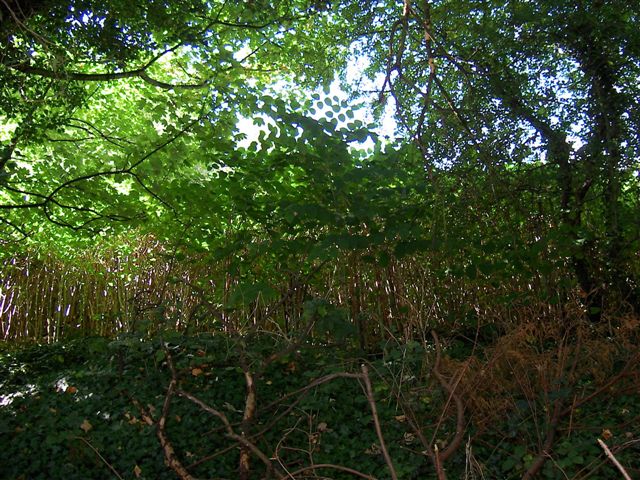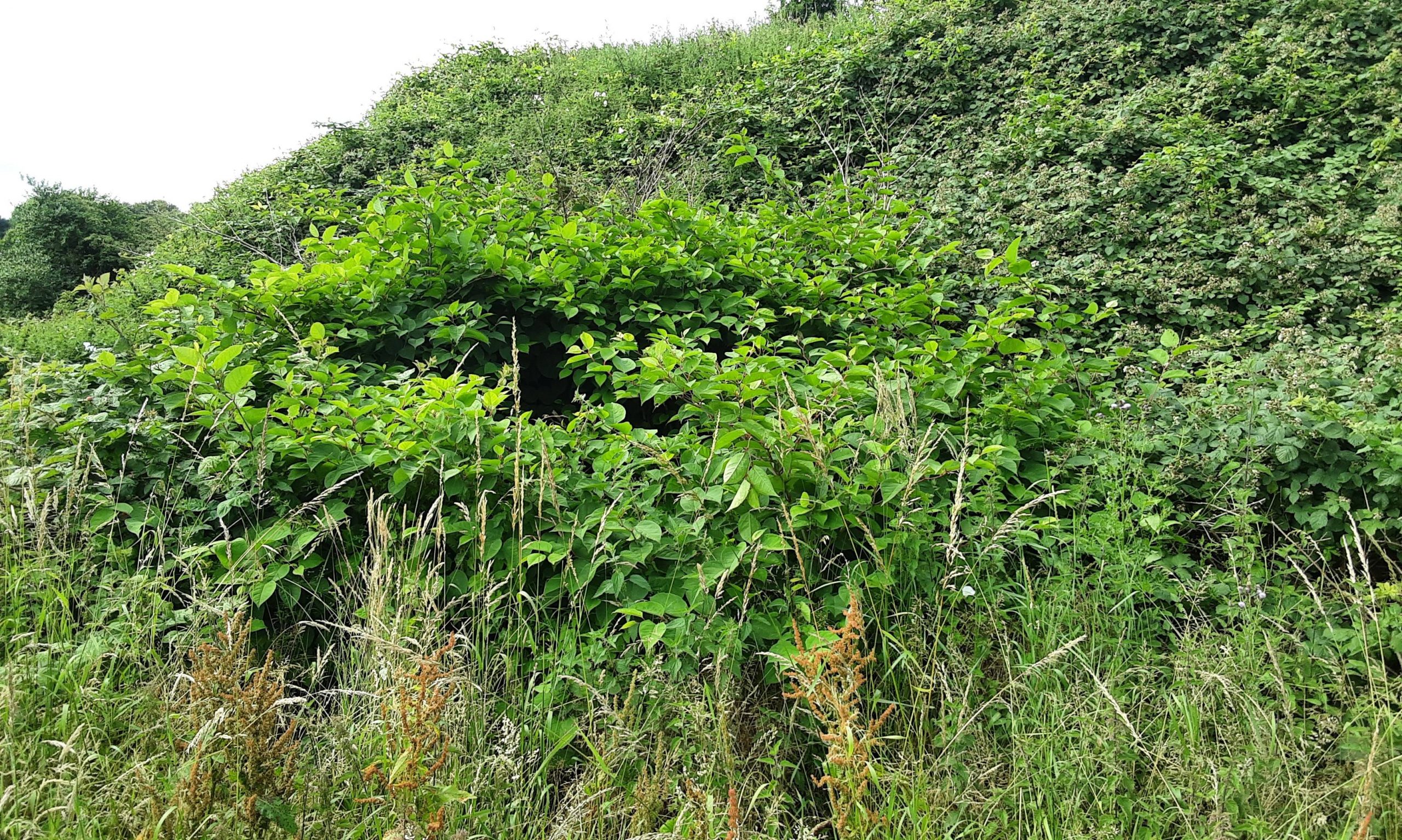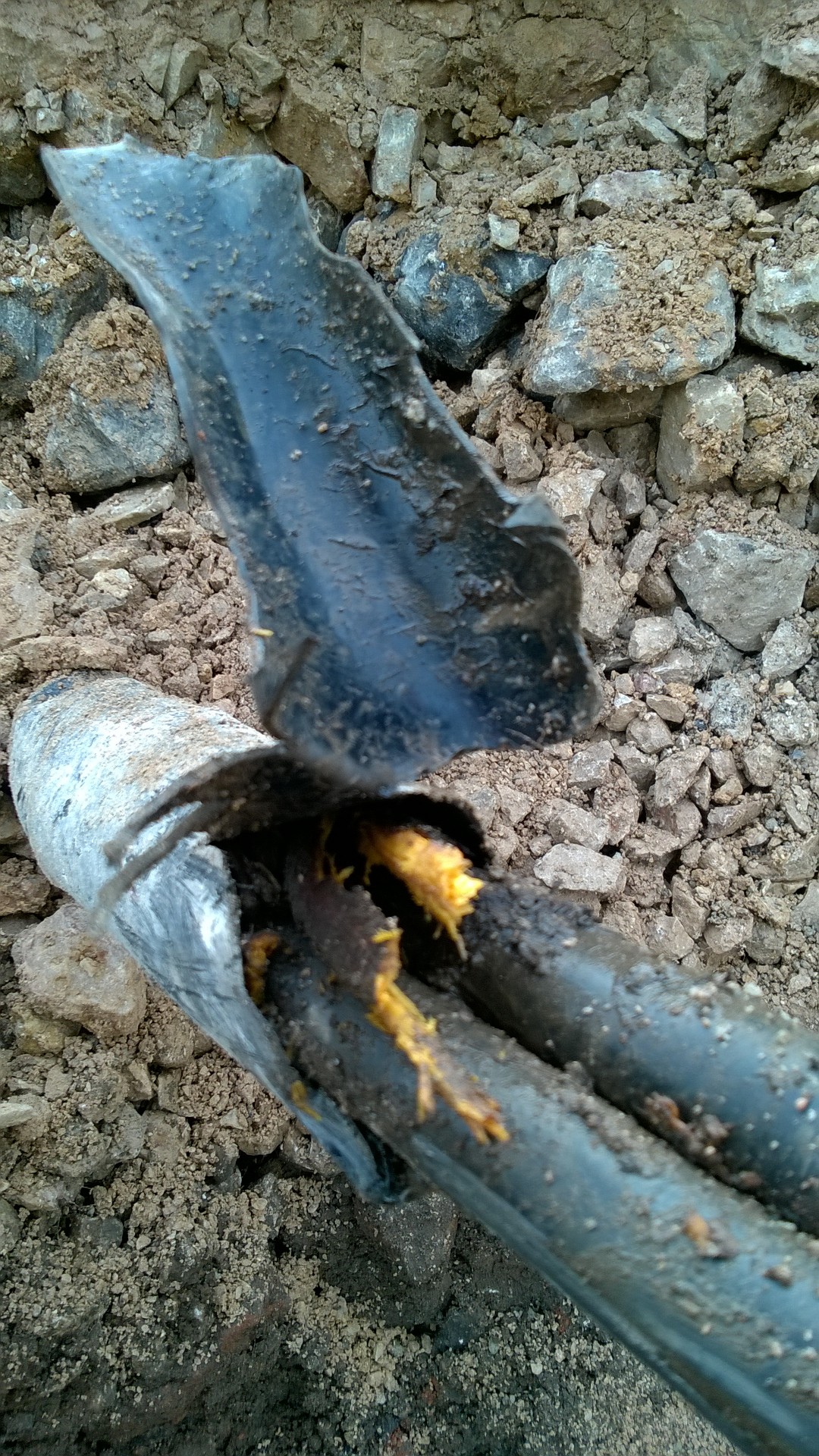Japanese knotweed has a high environmental impact, outcompeting our native vegetation, threatening biodiversity, limiting amenity space and causing issues for construction with its underground root system.
There is a reason we say ‘KNOTWEED IS NOT TO BE IGNORED!‘ Aside from the worry of eradication costs and the commercial burden it puts on businesses up and down the UK, knotweed also has a high environmental impact, which we’ll unpick in this article as we look at some of the biggest factors.
Why is this important right now? Invasive plants can often adapt to climate changes more easily than our native plants. Biodiversity is under threat, and we need to raise awareness of how invasive plants are changing our landscape.
Knotweed – an environmental menace!
To understand the full impact knotweed has on our environment, let’s first look at knotweed’s characteristics:
GROWTH PATTERN: Knotweed has a rapid growth rate that quickly establishes voluminous stands or swathes of dense foliage. As it increases, the resulting canopy of large, shovel shaped leaves and sturdy stems blocks out natural light needed for flora and fauna to survive, and its sprawling underground root system saps vital nutrients, leaving other plants fighting for survival. Inhibiting photosynthesis creates greater risk of the species dying out within their natural habitat as they become overwhelmed by knotweed growth.
STRUCTURE: As the canopy thickens this also impacts access and movement for wildlife and woodland floor species whose survival relies on being able to move around and forage for food and water. In winter knotweed’s fleshy stems turn to brittle canes. As they die down the stems mass into dense piles that can act as a dam causing rivers and streams to divert their flow and lead to flooding. Wildlife both large and small can be harmed by knotweed reducing their environmental space and availability of nutrients, and as species dwindle there is a knock-on effect down the food chain. The resultant ecosystem change can be drastic in some areas, and often catastrophic for habitat conservation.
RESILIENCE: With climate change, many species (both native and non-native) will need to adapt to more extreme temperatures and weather systems but knotweed is already capable of coping with excessive heat or cold, giving it the competitive advantage. With invasive species being the dominant cause of biodiversity loss, this makes knotweed a major concern.
MORE ON WHAT JAPANESE KNOTWEED LOOKS LIKE

Knotweed is a problem for UK’s waterways
Knotweed is widely known to grow alongside water, and the natural umbrella that it creates casts widespread shade that reduces light availability and can lead to stretches of deoxygenated water. This in turn unbalances the aquatic ecosystem, threatening the survival of water species as they are forced to search further afield for light and nutrients. Waterways can easily become stagnant around knotweed growth, reducing flow and creating flood risk. Additionally, when rivers flood small fragments of knotweed can easily be carried further downstream where it will populate new areas.

Knotweed does impact space and access
Knotweed, as we’ve already explained, can grow into dense thickets if left uncontrolled and this naturally leads to access issues, especially for amenity and recreation spaces. Its impenetrable shrub like masses can completely cover footpaths and river pathways and impact roads and highspeed networks. Knotweed also thrives alongside rail tracks – often as a result of growing in the wild, or spreading from adjacent properties. All of this results in difficult access, which in turn equals difficult and often more costly removal as contractors are challenged when getting machinery and equipment onto site.
Herbicide treatment is often the best option with amenity spaces, but in biodiverse rich environments such as green or open spaces, parks and sports grounds it needs to be applied with the greatest respect for environmental safety. Best left to the experts!

The impact of knotweed encroachment
Encroachment of an invasive species is an environmental issue – it threatens biodiversity, for all of the reasons already explained in this article. There is legislation around stopping the spread of knotweed for this reason. It’s widely publicised that knotweed can ‘encroach’ onto neighbouring property or land, which means your problem becomes a problem for someone else! And because all this happens underground you may not even know it’s happening until it becomes visible and by then it’s too late and action needs to be taken fast.
Knotweed encroachment happens on both residential and commercial sites costing people and businesses £thousands every year in removal costs and possibly legal fees.
Dealing with Knotweed underground
Knotweed roots are capable of growing through even dense clay, and when this happens around infrastructure such as pipes and cables or trees the problem of removal becomes a bigger challenge. Often knotweed will have caused damage to the infrastructure, as it grows through pipes it weakens the structure causing cracks that eventually leads to breakage. Rhizome growth around tree roots can cause restriction which weakens the tree’s stability. Projects that involve dealing with these challenges can require specialist equipment such as Air Spade or Vacuum Extraction to minimise risk of further damage and protect the environment during works.
Limiting impact
So what can we do to limit the environmental hazard that is Japanese knotweed? The best option is prevention. Ensure knotweed cannot take hold, or worse, take over! Getting a survey carried out will arm you with the right information – if you have knotweed you’ll be given options to treat or remove it, and if you haven’t it’ll be the news you wanted to hear.
The best time to have a survey carried out is now – as knotweed spring growth emerges and before it gets going. Book yours today.




